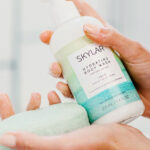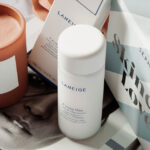

How Urban Life Affects the Skin Microbiome: A Chemist’s Perspective
 In our increasingly urbanized world, understanding the implications of city living on health is essential. One often overlooked aspect is the impact of urban environments on the skin microbiome. This complex ecosystem of microorganisms on the skin surface plays a pivotal role in maintaining skin health and overall homeostasis.
In our increasingly urbanized world, understanding the implications of city living on health is essential. One often overlooked aspect is the impact of urban environments on the skin microbiome. This complex ecosystem of microorganisms on the skin surface plays a pivotal role in maintaining skin health and overall homeostasis.
As a chemist, I delve into the intricate interplay between urban factors and the skin microbiome, elucidating how city life reshapes this delicate microbial community.
Pollution and Environmental Stressors
Urban pollution, comprising particulate matter (PM), volatile organic compounds (VOCs), ozone (O₃), and nitrogen dioxide (NO₂), significantly impacts the skin. These pollutants induce oxidative stress, leading to lipid peroxidation and inflammation, which disrupt the stratum corneum—the outermost skin layer. Such disruptions compromise the skin’s barrier function, facilitating the penetration of harmful substances and promoting an environment less hospitable to commensal microbes. Empirical studies indicate that exposure to high levels of urban pollution correlates with decreased microbial diversity and the prevalence of pathogenic bacteria, such as Staphylococcus aureus, which can exacerbate conditions like acne and atopic dermatitis (AD).
Diet and Lifestyle Factors
The urban lifestyle, characterized by a fast-paced routine, often leads to dietary choices that are suboptimal for skin health. Diets rich in processed foods and sugars can alter the skin’s pH and sebum production, influencing the microbiome’s composition. High glycemic diets, for instance, can promote the proliferation of Propionibacterium acnes, contributing to acne development. Additionally, chronic stress, prevalent in urban settings, triggers cortisol release, which can impair immune responses and promote dysbiosis—an imbalance in microbial communities. This interplay between diet, stress, and the skin microbiome underscores the need for a holistic approach to skin health.
Hygiene Practices
Urban residents frequently engage in rigorous hygiene practices, often using antibacterial soaps and sanitizers. While these practices are crucial for preventing disease, they can inadvertently strip the skin of its natural oils and beneficial microbes. The use of surfactants and alcohol-based products can alter the lipid matrix of the stratum corneum, reducing microbial diversity. Maintaining microbial homeostasis involves using gentle, microbiome-friendly cleansers and avoiding overuse of harsh antibacterial agents that can promote resistance and disrupt beneficial microbial populations.
Indoor Living and Air Quality
Prolonged indoor living, a hallmark of urban life, exposes individuals to indoor pollutants, such as dust mites, pet dander, mold spores, and chemical contaminants from household products. These pollutants can aggravate skin conditions and affect the skin microbiome. Furthermore, controlled indoor environments with air conditioning or heating can lead to reduced humidity levels, causing xerosis (dry skin) and altering the microbial landscape. Ensuring adequate indoor air quality and maintaining optimal humidity levels are vital for preserving skin health and microbial balance.
Social Interactions and Public Transport
High population density and frequent social interactions in urban areas increase exposure to a diverse array of microbes. While this can enhance microbial diversity, it also raises the risk of pathogen transmission. Public transport and communal spaces serve as hotspots for microbial exchange, introducing new strains that can disrupt the skin microbiome’s equilibrium. Understanding these dynamics is crucial for developing strategies to maintain skin health in densely populated settings.
Maintaining a Healthy Skin Microbiome in Urban Settings
Despite the challenges posed by urban living, several strategies can support and maintain a healthy skin microbiome:
-Use Gentle Skincare Products:
Formulations with mild surfactants and emollients that respect the skin’s natural barrier and microbial communities.
-Maintain a Balanced Diet:
A diet rich in antioxidants, essential fatty acids, and probiotics to support skin and gut microbiota.
-Manage Stress:
Techniques such as mindfulness, yoga, and regular physical activity to mitigate stress-related microbial imbalances.
-Limit Pollution Exposure:
Protective skincare products with antioxidants and barrier-forming ingredients, along with using indoor air purifiers.
-Stay Hydrated:
Ensuring adequate hydration supports skin barrier function and microbial diversity.In conclusion, urban living presents multifaceted challenges to the skin microbiome, from pollution and diet to hygiene and indoor environments. By understanding these factors and implementing evidence-based strategies, we can mitigate adverse effects and promote a resilient and healthy skin microbiome amidst urbanization.
As our cities continue to grow, such insights will be crucial for advancing public health and dermatological research.



